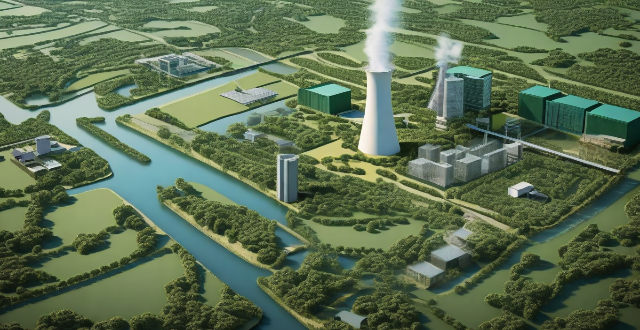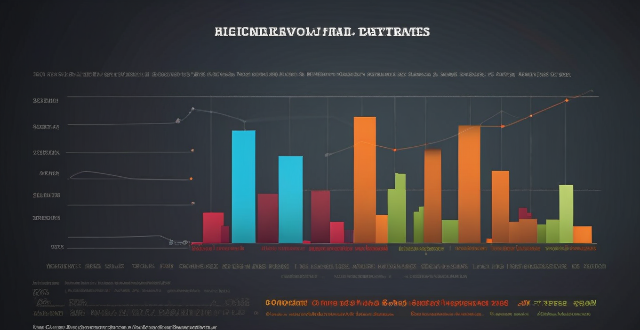Geothermal Factors

Can geothermal energy be a major source of power in colder climates ?
Geothermal energy, derived from the Earth's natural heat, can be a significant power source in colder climates. Key considerations include the availability of geothermal resources, technology and infrastructure, economic feasibility, environmental impact, and societal and regulatory factors. Challenges such as permafrost and public acceptance can be addressed through careful planning, technological innovation, and effective policy measures. If these factors are favorably aligned, geothermal energy could play a significant role in meeting the energy demands of colder regions while contributing to global efforts to combat climate change.

Is geothermal energy a practical solution for colder climates ?
Geothermal energy is a renewable source of energy that comes from the heat generated by the Earth's core. It has been used for centuries in various forms, such as hot springs and geysers. In recent years, there has been an increasing interest in using geothermal energy as an alternative to fossil fuels. But is it a practical solution for colder climates? Let's explore this question further. Advantages of Geothermal Energy in Colder Climates: 1. Reliable Source of Energy: Unlike other renewable sources like solar or wind power, which are dependent on weather conditions, geothermal energy can be harnessed all year round, regardless of the temperature outside. This makes it an ideal source of energy for colder climates where there may be long periods of ice and snow. 2. Low Emissions: Compared to fossil fuels, geothermal power plants produce significantly fewer greenhouse gases and air pollutants. This makes it an environmentally friendly option for communities looking to reduce their carbon footprint. 3. Cost-Effectiveness: While the initial cost of setting up a geothermal power plant can be high, the long-term costs are relatively low compared to other sources of energy. Once established, geothermal power plants require little maintenance and have a lifespan of several decades. This makes it a cost-effective solution for colder climates where energy demands are high due to heating needs. Challenges of Geothermal Energy in Colder Climates: 1. Limited Availability: One of the main challenges of using geothermal energy in colder climates is its limited availability. Not all areas have access to geothermal resources, and even those that do may not have enough heat to generate significant amounts of energy. This means that while geothermal energy can be a practical solution for some areas, it may not be feasible for others. 2. High Initial Costs: As mentioned earlier, the initial cost of setting up a geothermal power plant can be high. This can be a barrier for communities with limited financial resources or those without access to government subsidies or grants. Additionally, drilling equipment and expertise may need to be imported from other countries, adding to the overall cost. 3. Environmental Impact: While geothermal energy is generally considered to be environmentally friendly, there are still some potential impacts associated with its use. For example, drilling activities can disturb wildlife habitats and disrupt local ecosystems. Additionally, if not managed properly, geothermal power plants can release harmful chemicals into the atmosphere or nearby water sources. Conclusion: In conclusion, geothermal energy can be a practical solution for colder climates under certain conditions. Its reliability, low emissions, and cost-effectiveness make it an attractive option for communities looking to reduce their reliance on fossil fuels. However, its limited availability, high initial costs, and potential environmental impacts must also be considered before making any decisions about implementing geothermal energy projects in colder climates.

How does geothermal energy work and is it a viable alternative energy source ?
Geothermal energy is a renewable and sustainable source of energy that harnesses the natural heat from within the Earth's crust. This energy is obtained by drilling wells into the Earth's crust, where the heat is transferred to water or another fluid in a heat exchanger. The heated fluid then spins a turbine to generate electricity. There are three main types of geothermal power plants: dry steam, flash steam, and binary cycle. While geothermal energy has many benefits, including being renewable, cost-effective, and abundant in certain areas, it also comes with high upfront costs and location limitations. Additionally, there are environmental impacts associated with its use, such as potential contributions to earthquakes and impacts on local ecosystems. Despite these challenges, geothermal energy remains a valuable addition to our portfolio of renewable energy sources.

How does hydropower compare to other forms of alternative energy ?
Hydropower, a form of renewable energy that uses water flow or fall to generate electricity, is compared with other alternative energies like solar, wind, geothermal, and biomass across various aspects: 1. **Cost-Effectiveness**: Hydropower has high setup costs but low operational expenses, while solar and wind require significant upfront investment for installation but have lower running costs. Geothermal can be expensive initially due to drilling and exploration, and biomass costs vary based on the type and conversion technology used. 2. **Reliability and Consistency**: Hydropower offers consistent power generation as long as water flow is maintained. Solar power's reliability depends on sunlight, wind power on wind patterns, geothermal power provides consistent power once established, and biomass needs a steady supply of material for consistency. 3. **Environmental Impact**: Hydropower can impact habitats and water temperature but produces no direct emissions. Solar power has a relatively low environmental impact during operation but considers the manufacturing process. Wind power is generally environmentally friendly, geothermal power releases fewer pollutants than fossil fuels, and biomass burning releases CO2 but is carbon-neutral. 4. **Energy Storage and Grid Integration**: Hydropower offers excellent energy storage capabilities. Solar and wind powers require energy storage solutions. Geothermal power doesn't typically require energy storage, while biomass can be stored and used as needed. 5. **Scalability and Deployment Speed**: Large-scale hydropower projects can take many years to build, whereas small-scale or run-of-river systems can be deployed faster. Solar power can scale from small residential systems to large farms, and wind farms can be built relatively quickly. Geothermal power's scalability depends on the resource available, and deployment can be slow due to requirements. Biomass ranges from small community digesters to larger power plants, with scalability being moderate.

What are some essential factors to consider when buying secondhand items ?
When purchasing secondhand items, several essential factors should be considered to ensure the best value for money. These include the condition of the item, its price, the reputation of the seller, authenticity, age and lifespan, and safety and legality. By considering these factors, buyers can make informed decisions and avoid potential pitfalls.

What are some examples of recent technological advancements in renewable energy sources ?
Renewable energy sources have been gaining momentum in recent years due to the increasing awareness of climate change and the need for sustainable alternatives to fossil fuels. Here are some examples of recent technological advancements in this field: - Solar Energy: Perovskite solar cells, bifacial solar panels, concentrated solar power (CSP) systems with efficient heat transfer fluids and storage systems. - Wind Energy: Floating wind turbines designed for deep waters, smart grid integration with improved forecasting techniques, demand response programs, and energy storage solutions. - Hydropower: Run-of-river systems that minimize environmental impact by utilizing natural river flow, low head hydropower installed in existing water infrastructure without significant modifications. - Geothermal Energy: Enhanced geothermal systems (EGS) with improved drilling techniques and efficient heat exchangers, low-temperature geothermal heat pumps harnessing warmth from Earth's surface even in colder climates. - Biomass Energy: Anaerobic digestion process breaking down organic matter to produce biogas for electricity generation or as a natural gas substitute, torrefaction converting biomass into coal-like substance called biocoal with higher energy density and potential applications in replacing coal in power plants and industrial processes.

What are some innovative ways that people are using to generate their own alternative energy at home ?
The provided text discusses innovative ways to generate alternative energy at home. It mentions various methods such as solar power (solar panels, solar water heaters, solar chargers), wind power (home wind turbines, vertical axis wind turbines), hydropower (micro hydro systems, rainwater harvesting), geothermal energy (ground source heat pumps, geothermal water heaters), and biomass energy (wood burning stoves, biogas digesters). The conclusion highlights the potential of these methods in reducing a household's carbon footprint and contributing to a sustainable future.

What are the factors that contribute to climate vulnerability ?
Climate vulnerability is influenced by various factors that can exacerbate the impacts of climate change and limit the ability of systems to adapt, including exposure to extreme weather events and sea level rise, ecosystem sensitivity, economic resources, infrastructure resilience, population density, dependency on climate-sensitive sectors, policy frameworks, access to information and technology, traditional knowledge, awareness and education, biodiversity loss, and land use changes. Addressing these factors through comprehensive strategies is essential for building resilience against the challenges posed by a changing climate.

What are the key factors to consider when planning an education budget ?
The text provides a comprehensive guide on the key factors to consider when planning an education budget. These factors include student population, curriculum and program offerings, faculty and staff salaries, infrastructure and maintenance costs, technology and digital learning tools, professional development opportunities, student support services, community partnerships and collaborations, and contingency funding. By considering these factors, one can create a budget that meets the educational needs of students while staying within financial constraints.

What are the key factors that contribute to social harmony ?
Social harmony is a state of peaceful coexistence and cooperation among individuals, groups, and communities within a society. Key factors contributing to social harmony include respect for diversity, communication and dialogue, education and awareness, equality and fairness, law and order, civic participation and volunteerism, and economic stability and prosperity. By promoting these factors, societies can create a more peaceful and cooperative environment where everyone can thrive.

What factors influence the performance of tech stocks ?
Tech stocks are influenced by macroeconomic conditions, industry-specific factors, and company-specific factors. Macroeconomic conditions include interest rates and economic growth. Industry-specific factors include regulatory changes and technological advancements. Company-specific factors include financial health and leadership and management.

What factors determine the amount of a student loan ?
The amount of a student loan is determined by several key factors, including eligibility criteria set by the lender, the cost of attendance at the chosen school, the student's financial need, and the type of loan (federal or private). Other influential factors include repayment options, school choice, and the availability of other financial aid. Students should consider all these elements and explore all possible funding options before taking out a loan.

What factors should I consider before upgrading my broadband connection ?
This topic summary discusses the key factors to consider before upgrading a broadband connection, including speed requirements, data caps, reliability, cost, availability, customer support, and additional features. It emphasizes the importance of evaluating current internet usage, future needs, monthly limits, overage charges, downtime frequency, service outages, contract terms, pricing plans, provider options, infrastructure, service quality, user reviews, bundling opportunities, and security measures. The conclusion suggests that by considering these factors, one can make an informed decision that meets current needs and anticipates future changes in internet usage patterns.

What factors affect the price of a second-hand iPhone ?
The price of a second-hand iPhone is influenced by various product-related and market-related factors. Product-related factors include the condition, age, storage capacity, and accessories of the phone. Market-related factors encompass supply and demand dynamics, brand loyalty, perception of new models, economic conditions, and currency exchange rates. Understanding these factors can help buyers and sellers negotiate better prices in the second-hand market.

What factors affect the accuracy of climate model predictions ?
The accuracy of climate model predictions is influenced by various factors including data quality and availability, model complexity and resolution, initial conditions and parameterizations, natural variability and external forcing, and the use of model intercomparison and ensemble methods. High-quality, up-to-date data and comprehensive models that account for multiple physical processes and high-resolution details are crucial. Initial conditions, sub-grid scale process parameterizations, internal climate variability, and external forcing factors add layers of complexity and uncertainty. To mitigate these uncertainties, scientists employ intercomparison projects and ensemble forecasting techniques to assess model reliability and potential future climate scenarios.

How do psychological factors influence sports performance and research ?
This document discusses the influence of psychological factors on sports performance, emphasizing the importance of motivation, confidence, concentration, resilience, and team dynamics. It highlights how these elements can enhance or hinder athletic performance and underscores the significance of research in understanding and applying psychological principles to optimize athlete mental states. The text concludes by noting the potential for ongoing research to refine our comprehension and application of psychology in sports, aiming to help athletes achieve their full potential mentally and physically.

What psychological factors contribute to the denial of environmental problems ?
The article discusses the psychological factors contributing to the denial of environmental problems. It mentions cognitive bias, emotional factors, and social influence as the main contributors to this issue. Cognitive bias includes confirmation bias and availability heuristic, which lead individuals to process information in a way that confirms their existing beliefs and values. Emotional factors such as fear, anger, and sadness can arise when confronted with environmental issues and lead to avoidance or denial. Social influence, including groupthink and social norms, can also contribute to the denial of environmental problems. Understanding these factors is crucial for promoting sustainable behavior and addressing environmental issues effectively.

How do cultural factors influence women's access to education ?
The text discusses cultural factors that influence women's access to education, including gender roles, perceptions of capability, social norms, economic priorities, religious teachings, and ethnic customs. These factors can either facilitate or hinder educational opportunities for women, shaping their roles in society and the economy. Addressing these barriers requires a multifaceted approach that includes challenging harmful cultural norms, promoting gender equality, and advocating for policies that support female education.

What are the key factors that contribute to high-level sports performance ?
High-level sports performance is determined by a combination of physical prowess, mental strength, tactical acumen, and favorable environmental conditions. Physical factors include strength and conditioning, flexibility and mobility, nutrition and hydration, and rest and recovery. Psychological factors encompass mindset and motivation, confidence and self-belief, mental toughness, and concentration and focus. Tactical factors involve technical skill, game intelligence, adaptability, and teamwork and communication. Environmental factors include training facilities, coaching staff, and support personnel. By addressing each of these factors through dedicated training and support systems, athletes can reach their full potential and achieve excellence in their chosen sport.

What are the key factors driving the growth of the Chinese economy ?
The growth of the Chinese economy has been driven by several key factors, including government policies and reforms, demographic dividend, globalization and export-led growth, domestic demand and consumption, and environmental sustainability and green growth. These factors have collectively contributed to rapid economic development in China over the past few decades. However, ongoing challenges such as demographic changes, environmental concerns, and global economic uncertainties require continued adaptation and innovation to sustain future growth.

What factors should be considered when planning the location of charging stations ?
When planning the location of charging stations, several factors must be considered to ensure their effectiveness and accessibility. These factors include demand analysis, geographic considerations, infrastructure availability, economic factors, environmental impact, user experience, and technology advancements. By considering these factors, planners can ensure that charging stations are strategically located to meet the needs of electric vehicle owners while also considering economic, environmental, and societal impacts.

What are the key factors that contribute to women's scientific literacy ?
Scientific literacy is crucial for personal development and education, enabling individuals to engage with their surroundings. For women, achieving scientific literacy can be influenced by various factors such as educational opportunities, cultural and societal norms, support systems and resources, workplace environment, policy and legislation, community and media representation, and personal development and self-advocacy. Addressing these key factors can empower women with the scientific knowledge needed to thrive in an increasingly technological world.

What factors should be considered before choosing a celebrity to endorse a product ?
Before selecting a celebrity to endorse your product, itBefore selecting a celebrity to endorse your product, it several factors that can impact the it's crucial to consider several factors that can impact the success of your marketing campaign. These include the celebrity's image and reputation, target audience demographics and cultural relevance, popularity and influence, market research, cost versus benefit analysis, chemistry between brand and celebrity, and legal and ethical considerations. By carefully weighing these factors, you can select a celebrity endorser who will enhance the perceived value of your product and resonate with your intended customer base, ultimately driving brand awareness and sales.

What are the key factors that contribute to healthy adolescent development ?
Adolescence is a critical period of transition between childhood and adulthood, characterized by significant physical, cognitive, emotional, and social changes. Healthy development during this stage involves several key factors that support adolescents in navigating these changes successfully. The main elements include physical health (nutrition, exercise, sleep), emotional health (self-esteem, stress management, emotional regulation), cognitive development (education, mental stimulation, decision-making skills), social development (peer relationships, family relationships, role models), safety and security (physical safety, emotional safety, financial security), opportunities for growth (extracurricular activities, volunteer work, cultural experiences), and resilience and adaptability (problem-solving skills, flexibility, support systems). Addressing these key factors can significantly contribute to the overall health and success of adolescents as they transition into adulthood.

What factors should be considered when evaluating the impact of climate policies on different communities ?
When evaluating the impact of climate policies on different communities, several factors need to be considered. These include economic factors such as income levels and employment opportunities, social factors like population density and education levels, environmental factors including geographical location and biodiversity, political factors such as policy support and legal frameworks, and health factors such as public health infrastructure and mental health. Taking these factors into account ensures that the unique circumstances and needs of different communities are addressed, leading to more effective and equitable outcomes.

What are the key factors to consider when designing a combination motor drive system ?
Designing a combination motor drive system requires careful consideration of several key factors, including load requirements, efficiency and performance, control strategies, reliability and safety, and environmental considerations. Load requirements play a significant role in determining the type and size of the motor required for the drive system, while efficiency and performance are critical factors to consider when designing a motor drive system. Control strategies used in the motor drive system are also crucial, with common strategies including open-loop control, closed-loop control, and adaptive control. Reliability and safety are essential factors to consider when designing a motor drive system, with redundancy, fault detection and protection, and safety interlocks being key considerations. Finally, environmental considerations should also be taken into account when designing a motor drive system, with temperature, humidity, vibration, and shock loads being important factors to consider.

What are the key factors to consider when planning an energy-efficient building project ?
The text provides a summary of key factors that should be considered when planning an energy-efficient building project. These factors include site selection and orientation, building design and construction, and energy sources and consumption. The location and orientation of the building on the site can have a significant impact on its energy efficiency, as well as the design and construction of the building itself. Consideration should also be given to the sources of energy used by the building and how that energy is consumed. By considering these key factors during the planning stages of an energy-efficient building project, it is possible to create a building that is comfortable, functional, environmentally responsible, and economically sustainable over its lifetime.

What factors contribute to a decrease in motivation to learn and how can they be addressed ?
Motivation to learn can be affected by a variety of factors, including lack of interest or passion, external pressures, emotional state, physical condition, teaching methods, and expectations/feedback. To counteract these influences, strategies such as cultivating interest, managing stress, supporting emotional well-being, addressing physical needs, enhancing teaching techniques, and setting realistic goals are recommended. By understanding and proactively addressing these factors, both educators and learners can work together to enhance motivation, leading to more productive and satisfying learning experiences.

What are the key factors to consider when selecting a permanent magnet motor for a specific application ?
When selecting a permanent magnet motor for a specific application, several key factors must be considered to ensure optimal performance and efficiency. These factors include application requirements, efficiency and performance, size and weight, temperature range and cooling, control and feedback systems, cost and budget, reliability and durability, and compatibility with other system components. By carefully considering these key factors when selecting a permanent magnet motor for your specific application, you can ensure that you choose a motor that meets your needs in terms of performance, efficiency, size, cooling requirements, control options, cost, reliability, and compatibility with other system components.